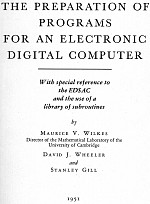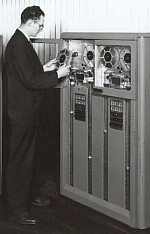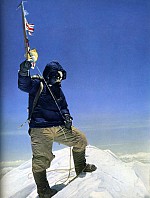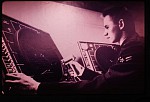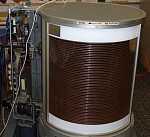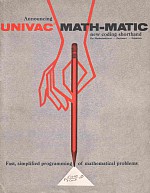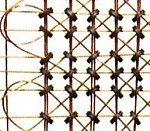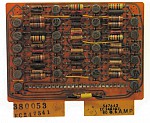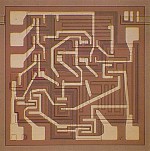Computer Science
Computing History Displays: Computer History Time Line - Developing the Technology
The first real computers started work in the early 1950s. They were research projects really, with odd names such as Silliac and Maniac, but they quickly became products as multiple copies of each design were manufactured. Reliable technology - both hardware and software - was phased-in during the decade giving a sound base for growing a thriving industry.
In 1951, computers - Ferranti Mark-1 and UNIVAC - become commercially available. UNIVAC, developed by Eckert and Mauchly, the ENIAC designers, stores data on magnetic tapes rather than cards, giving much greater density and faster access. (You can read an advertisement for the UNIVAC at our collection of pamphlets on the fourth floor.) Ferranti Mark-1 is the commercial development of the University of Manchester Computer. Further Images.
Although steel magnetic tapes were provided with the Univac, IBM introduces cheaper lighter plastic tapes with the 726 tape drive in 1953 for their 705 computer - an ingenious vacuum buffer separates the movement of the massive reels from the movement of tape. Descendants of these tapes will provide archival storage through to the 1980s. You can find more information on the history of magnetic tape storage on the fifth floor.)
4.1.5 1953: 1MHz clock - The Whirlwind
The first computers were thousands of times faster than their predecessors. Although it was possible to operate electronic devices at sub-microsecond speeds, the power of the computer did depend a great deal on the amount of hardware and cost. The Whirlwind, with its 1MHz clock - the fastest of the early computers - was developed by 1953. It led the way in use of visual displays and was a test bed for the first core memories. It was also the basis for the US SAGE air-defence system later in the 50s.
4.1.6 The database server
IBM creates the 305 RAMAC in 1956 by attaching the first fixed-disk to the IBM 305 computer. The disk has a capacity of about 5 megabytes (MB). It is intended for permanent data storage and is the first use of a computer as a database where the computer is primarily a repository for stored data, with the computer's role reduced to providing access for users of the data. You can find more information on the history of disk storage on the fifth floor.)
4.1.7 Speaking the computer's language
The first computers have been programmed directly in binary machine language. Five years of development leads to the wide availability by 1957 of high-level languages which allow computers to be given instructions by their users. IBM develops Fortran, and Univac devises MATH-MATIC and FLOW-MATIC, the latter leading to the standard business language Cobol. Algol develops as an international standard for program exchange. Fortran goes through many versions and is still being used. The programs, called "compilers," that translate high-level languages to machine language are one of the most important inventions in modern computing. (You can read advertising for FLOW-MATIC and MATH-MATIC at our collection of pamphlets on the fourth floor.)
4.1.8 Better memory
Core memory, where data is represented by the polarity of magnetization of a tiny toroid, is developed by Jay Forrester at MIT, providing an electronic technology for computer memory that is both reliable and fast. It is adopted by IBM and other manufacturers, and remains the main memory technology until replaced by integrated circuit memories in the mid 1970s.
4.1.9 The transistor
Although fast, vacuum tube computers are expensive and unreliable. When transistors, developed at Bell Labs in 1947, become widely available in 1958, they are immediately used to make computers and become the circuit technology of choice for succeeding decades. The first new transistorized computers to be sold commercially are from Philco but other manufacturers quickly follow, in many cases redesigning vacuum tube computers using transistors. The IBM 7090 (709T), the archetype computer from the early 1960s which featured in the movie "Dr Strangelove", is one such. Further Images.
4.1.10 Integrated circuits
The next quantum leap in circuit technology will be the development of complete circuits - transistors, resistor, capacitors and wires - etched directly on a silicon surface using techniques extended from printing. Integrated circuits, developed through the 1950s, arrive in 1959 but do not come into wide use until the late 1960s. Before ICs, computer circuits were constructed from discrete components in many ingenious schemes.

